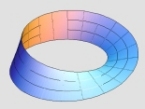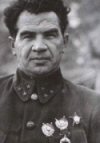Yoozernamemember
Posts: 20
Joined: 4/29/2011
Status: offline

|
http://www.globalsecurity.org/military/systems/ground/recoilless.htm
quote:
Since the end of World War II, the US Army has conducted extensive testing on the effects of firing recoilless weapons from within enclosures. Beginning as early as 1948, tests have been conducted on every type of recoilless weapon available. In 1975, the US Army Human Engineering Laboratory at Aberdeen Proving Grounds, Maryland, conducted extensive firing of the LAW, Dragon, and TOW from masonry and frame buildings, and from sandbag bunkers.
Firing these weapons from enclosures presented no serious hazards, even when the overpressure was enough to produce structural damage to the building. Little hazard exists to the gunnery or crew from any type of flying debris. Loose items were not hurled around the room. No substantial degradation occurs to the operator's tracking performance as a result of obscuration or blast overpressure.
The most serious hazard that can be expected is hearing loss. This must be evaluated against the advantage gained in combat from firing from cover. To place this hazard in perspective, a gunner wearing earplugs and firing the loudest combination (the Dragon from within a masonry building) is exposed to less noise hazard than if he fired a LAW in the open without earplugs.
The safest place for other soldiers in the room with the shooter is against the wall from which the weapon is fired. Firers should take advantage of all available sources of ventilation by opening doors and windows. Ventilation does not reduce the noise hazard, but it helps clear the room of smoke and dust, and reduces the effective duration of the overpressure.
The only difference between firing these weapons from enclosures and firing them in the open is the duration of the pressure fluctuation. Frame buildings, especially small ones, can suffer structural damage to the rear walls, windows, and doors. Large rooms suffer slight damage, if any. Recoilless weapons fired from within enclosures create some obscuration inside the room, but almost none from the gunner's position looking out. Inside the room, obscuration can be intense, but the room remains inhabitable.
The Dragon causes the most structural damage, but only in frame buildings. There does not seem to be any threat of injury to the gunner, since the damage is usually to the walls away from the gunner. The most damage and debris is from flying plaster chips and pieces of wood trim. Large chunks of plasterboard can be dislodged from ceilings. The backblast from the AT4, Dragon, or TOW rarely displaces furniture.
While the results of the tests may have shown that the threat of injury from debris is rare, commanders must ensure that proper safety precautions are followed prior to firing weapons inside a room.
|
 Printable Version
Printable Version

















 New Messages
New Messages No New Messages
No New Messages Hot Topic w/ New Messages
Hot Topic w/ New Messages Hot Topic w/o New Messages
Hot Topic w/o New Messages Locked w/ New Messages
Locked w/ New Messages Locked w/o New Messages
Locked w/o New Messages Post New Thread
Post New Thread